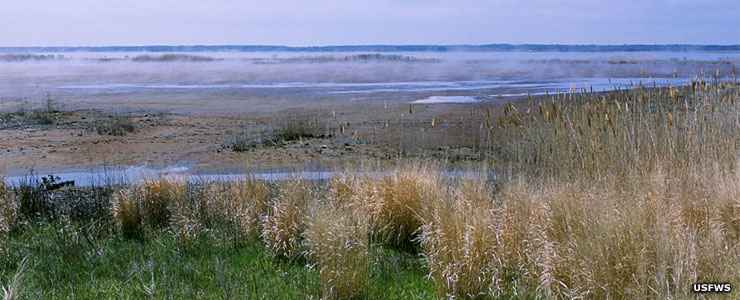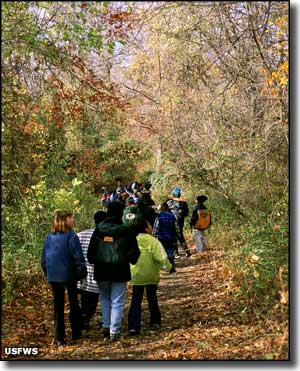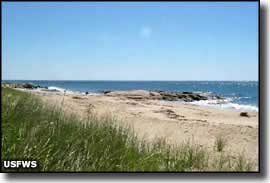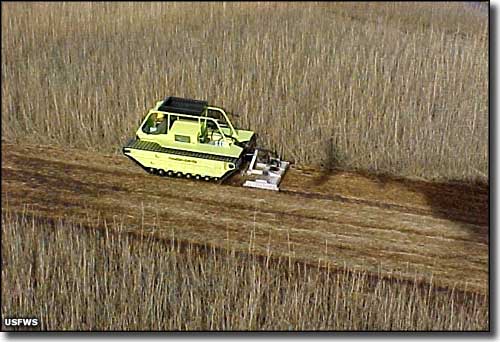Edwin B. Forsythe National Wildlife Refuge

Wetlands at Edwin B. Forsythe National Wildlife Refuge

Containing more than 47,000 acres, Edwin B. Forsythe National Wildlife Refuge is an important property along the New Jersey shoreline. Here in the middle of one of the Atlantic Flyway's busiest migration routes, the property sees thousands of birds passing through in the spring and fall. The National Wildlife Refuge is actually two units: to the north, the Barnegat Division on the inland side of Barnegat Bay, to the south, the Brigantine Division along the south bank of the mouth of the Mullica River (about 10 miles north of Atlantic City and 20 miles south of Barnegat Bay).
Most of the Edwin B. Forsythe NWR management efforts are in support of the habitat needs of the American black duck and Atlantic brant. Spring sees the water levels in the fresh water impoundments lowered to stimulate the growth of moist soil vegetation that will provide valuable seed and feed for birds when they return in the fall. In the fall, water levels are raised again to make life easier for the feeding waterfowl.
Within the Brigantine Division is the 6,600-acre Brigantine Wilderness. Brigantine Wilderness is an area of tidal wetlands that also contains Holgate and Little Beaches, two of the last undeveloped barrier beaches in New Jersey. This is an area set aside for endangered bird species like the piping plover, least tern and black skimmer to nest and raise their young in relative peace and quiet. To go to Little Beach, you need a special permit (for research or educational purposes) because the beach is closed to people all year. Holgate Beach is closed to the public only during nesting season (April 1 through August 31).

Brigantine Wilderness
About 80% of Edwin B. Forsythe NWR is composed of tidal salt marsh with shallow coves and bays mixed in. This part of the property sees a lot of migratory wading birds and shorebirds. The remaining 5,000 acres of the NWR are uplands forest, a mix of hardwoods and pines that sees a few box turtles and white-tailed deer and a lot of songbirds and woodcock.
Forsythe NWR is a designated Wetlands of International Importance site. It is also a location on the New Jersey Coastal Heritage Trail and part of the Jacques Cousteau National Estuarine Research Reserve.
The refuge headquarters and primary public use area is on Great Creek Road, off US Highway 9 at the Brigantine Division. Most folks get here by car or bike. Once on the property, Wildlife Drive is an eight-mile self-guided auto tour: grab a brochure so you know where you're going and what you're looking at. For hikers, there are four trails that vary in length from 1/4 mile to four miles.
The Barnegat Observation Platform is in Barnegat off US Highway 9 on Bay Shore Drive, between Edison and Ridgeway Avenues. The platform gives a great view over the Barnegat Division's 600-acre Barnegat impoundment. The Barnegat Division also offers the one-mile deCamp Wildlife Trail (at Montoloking and Adamston Roads in Brick Township) and the one-mile Eno's Pond nature trail (a partnership between the NWR and Ocean County Parks and Rec).

The Marsh Master in action at Edwin B. Forsythe NWR
Small photo of Brigantine Wilderness courtesy of the US Fish & Wildlife Service